
Protea cynaroides 4" pot Grassy Knoll Plants
Protea cynaroides, also known as the King Protea, is the national flower of the Republic of South Africa. Its large, unique, vibrant, and elegant flowers earn it the title of "King of Flowers". The long-lasting King Protea, renowned worldwide as one of the most luxurious and exquisite flowers, symbolizes vitality, victory, fulfillment, and.
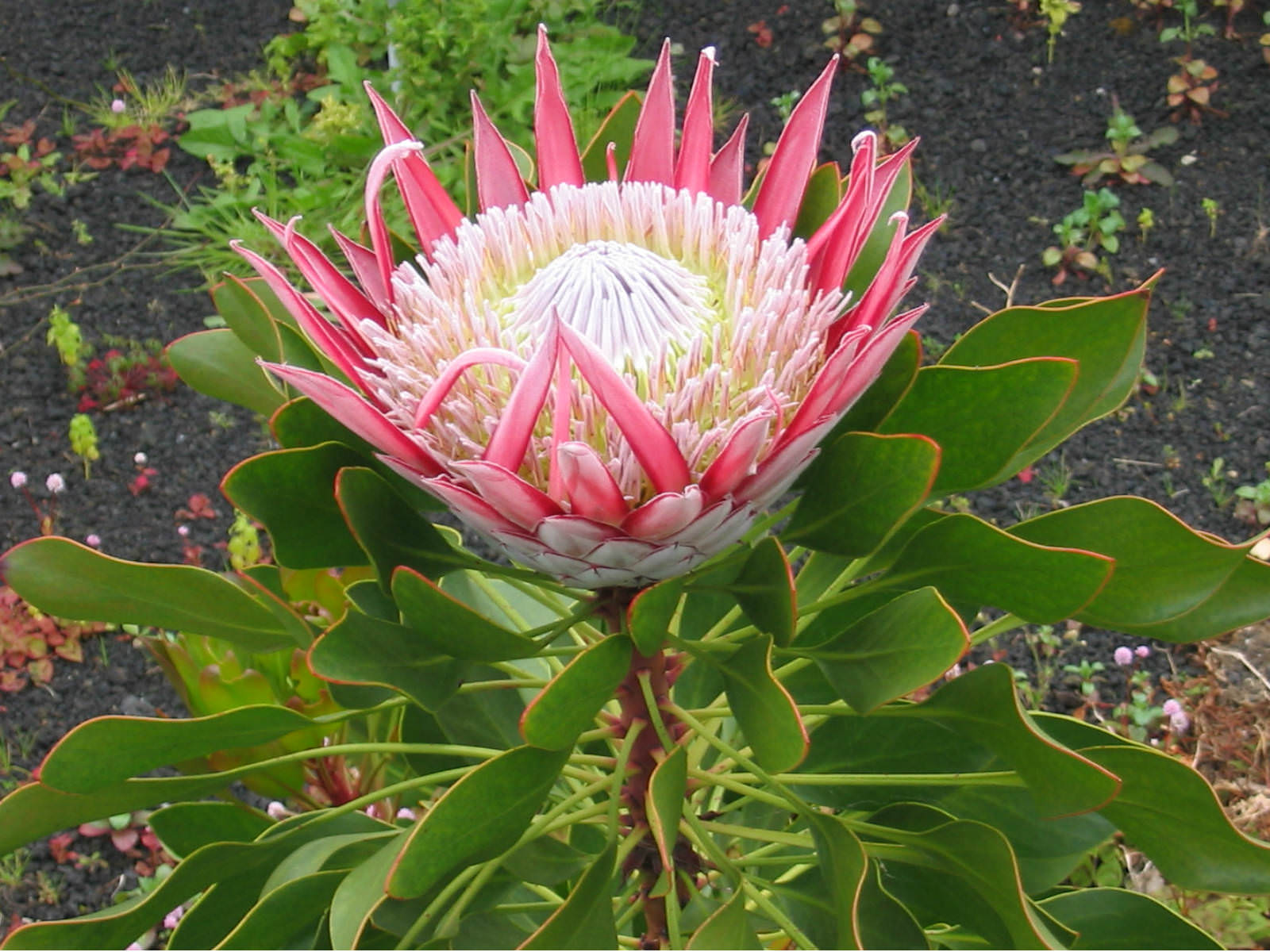
Protea cynaroides (King Protea) World of Flowering Plants
The national flower of South Africa, Protea cynaroides (King Protea) is a sparsely branched evergreen shrub prized for its huge bowl-shaped flower heads, 6-12 in. across (15-30 cm). Each spectacular flower head features a central bouquet of inner flowers surrounded by stiff, pointed, colorful bracts. The flowers can be wide open, like dinner plates, or narrowly funnel shaped.
Plant World Protea cynaroides
Description. Handsome upright 5-7'x7' shrub with large pink-red/white flowers and deep green leaves. Lignotuberous. Flowers best in full sun. Grows well in most well-drained light or heavy soils. Tolerant of frost and extended dry periods once established. Excellent hedge or screen. The South African national flower.
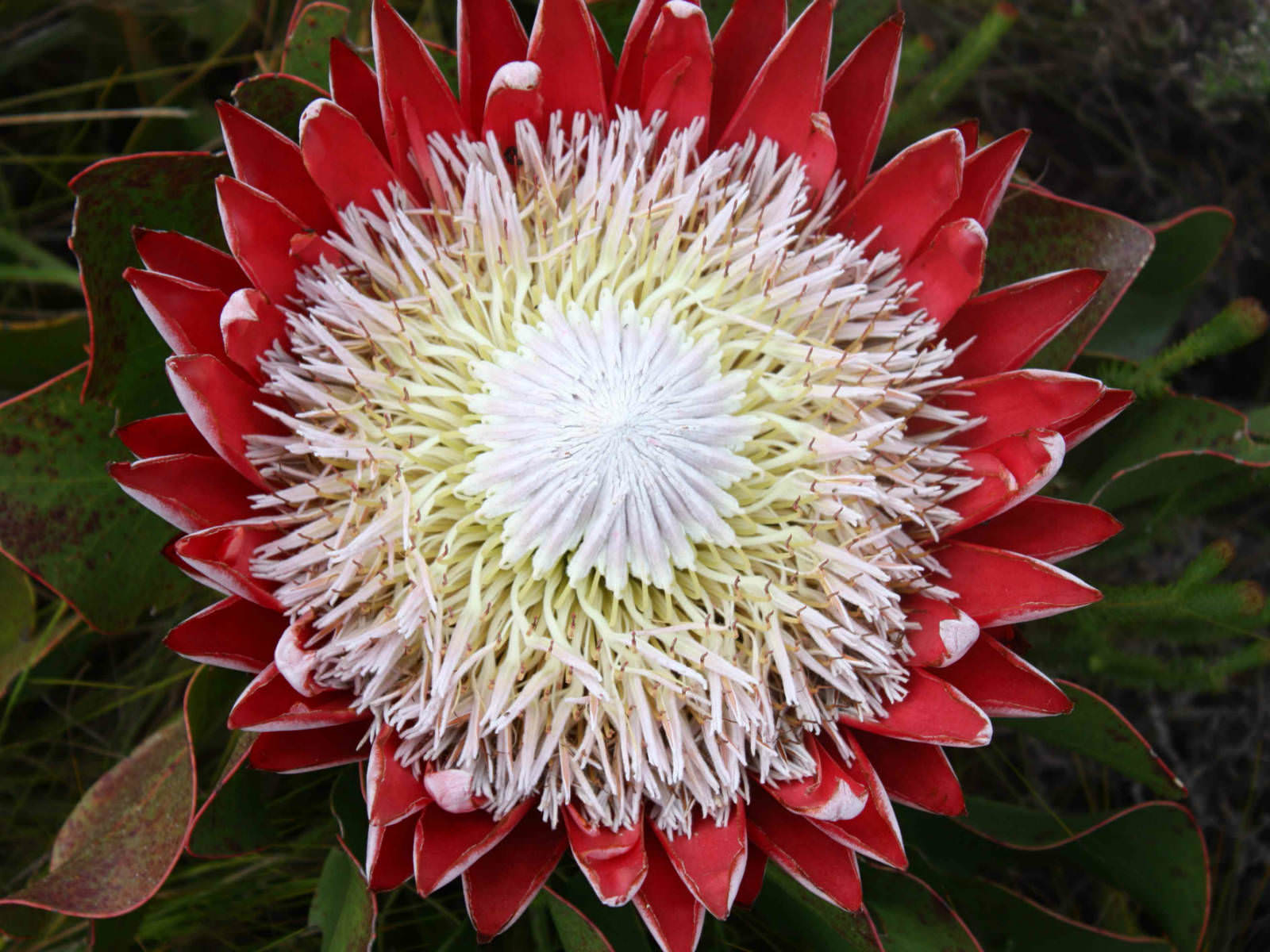
Protea cynaroides King Protea, Giant Protea World of Flowering Plants
Sturdy stems and long-lasting blooms make proteas the perfect cut flowers. Extend their life in a vase by following these steps: Snip off about 1⁄4 inch from the end of the stem. Strip stems of any leaves that will be below the water's surface. Add 1⁄4 teaspoon of bleach per quart of water to prevent algae from growing—or change water.
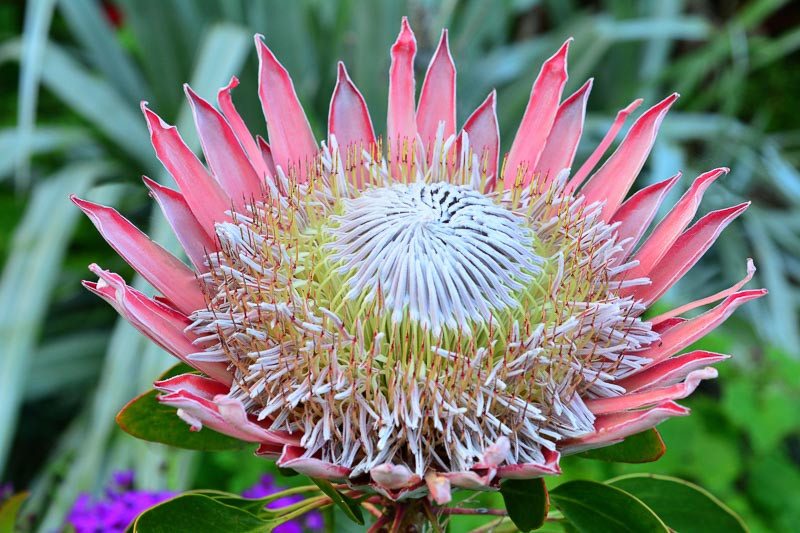
Protea cynaroides (King Protea)
Protea cynaroides is the largest flowers in Protea family. That is why it is known as King protea, giant protea, as well as honeypot, and king sugar bush. It is tall and adaptable to heat, which is why this plant is easy to care for. In addition, its goblet-shaped flowers attract bees and birds. But beware: its flowers, nectar, and seeds are.

Protea cynaroides PLANTBOOK
Protea cynaroides, commonly called king protea, is a broadleaf evergreen shrub that is native to South Africa. It typically matures to 3-4' (less frequently to 6') tall. It is best known for its huge goblet or bowl-shaped flower heads from 5" to 12" in diameter. Each flower head consists of a large, domed, central mass of tepaled inner flowers.

Plant World Protea cynaroides
King Protea (Protea cynaroides) Also known as the king protea, giant protea or king sugar bush, this is one of the most recognisable and popular proteas in the genus, sporting the largest flower heads that burst with pink and white hues. The king protea is the national flower of South Africa and grows to around 1 to 2 metres tall.

Protea cynaroides 'Little Prince' BBC Gardeners World Magazine
To produce the best Protea flowers they need to be in full-sun and not underneath hanging trees that may drip water onto the flowers themselves. They need a loamy soil that is more acidic (preferably between 5-6 pH) and that can drain freely. Proteas can be fertilised and this is probably best achieved by using a slow-release fertiliser as.
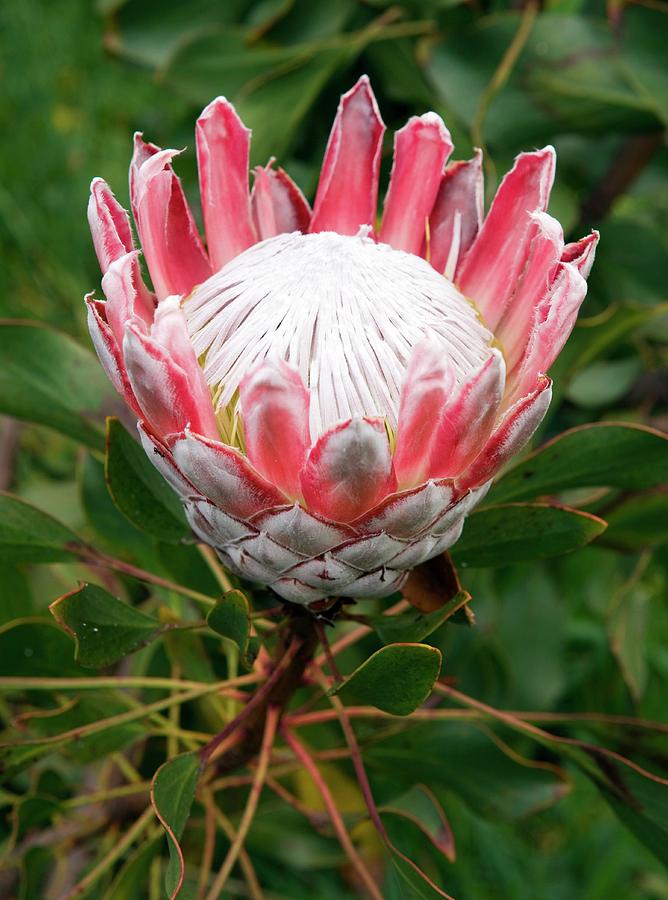
King Protea (protea Cynaroides) Flower Photograph by Pascal Goetgheluck/science Photo Library
However, they also make fantastic specimens for the greenhouse or conservatory and, if you grow them in containers, you can take them outside for summer displays. Protea cynaroides 'Little Prince' is a compact protea, ideal for growing in containers. Pink and yellow flowerheads with red bracts are borne from late spring to summer.

FileProtea cynaroides 5.jpg Wikipedia
6. Protea cynaroides. Protea cynaoids produce flower heads with bracts that surround them. Flowerheads vary in size from five to twelve inches, and they range in color from cream white to deep pink. Paler pinks have a silver sheen and are the most desirable colors. These plants can reach six feet tall and have thick stems and large, shiny green.
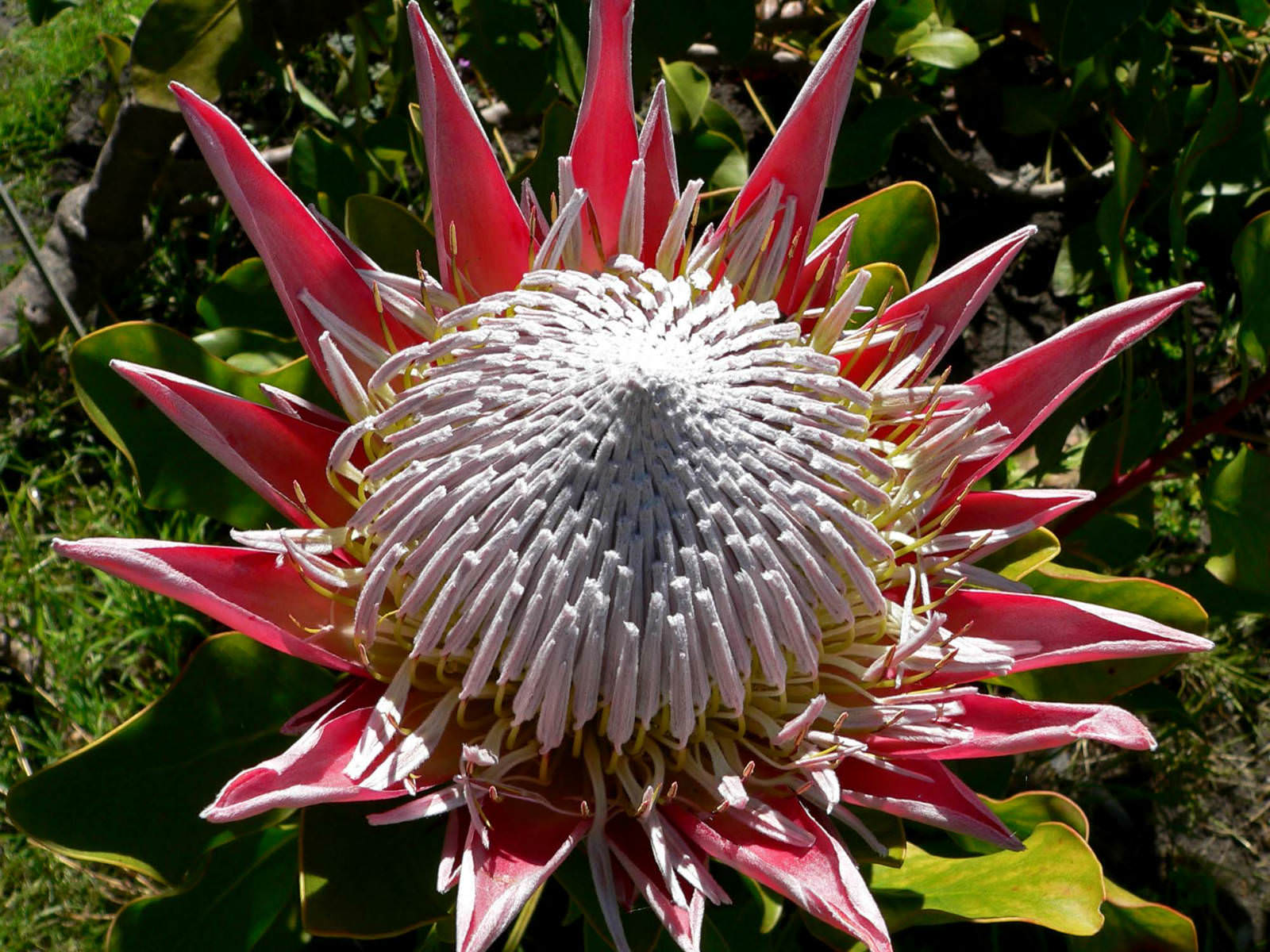
Protea cynaroides (King Protea) World of Flowering Plants
Protea cynaroides (King Protea) - Shrub with reddish stems and large rounded green leaves to 3 to 5 feet tall and wide with huge 5-10 inch flowers. These pale silky pink or sometimes deep crimson flowers, form a roundish central peak of flowers surrounded by rays of darker pink bracts. Flowers cover the shrub from autumn to spring with some.
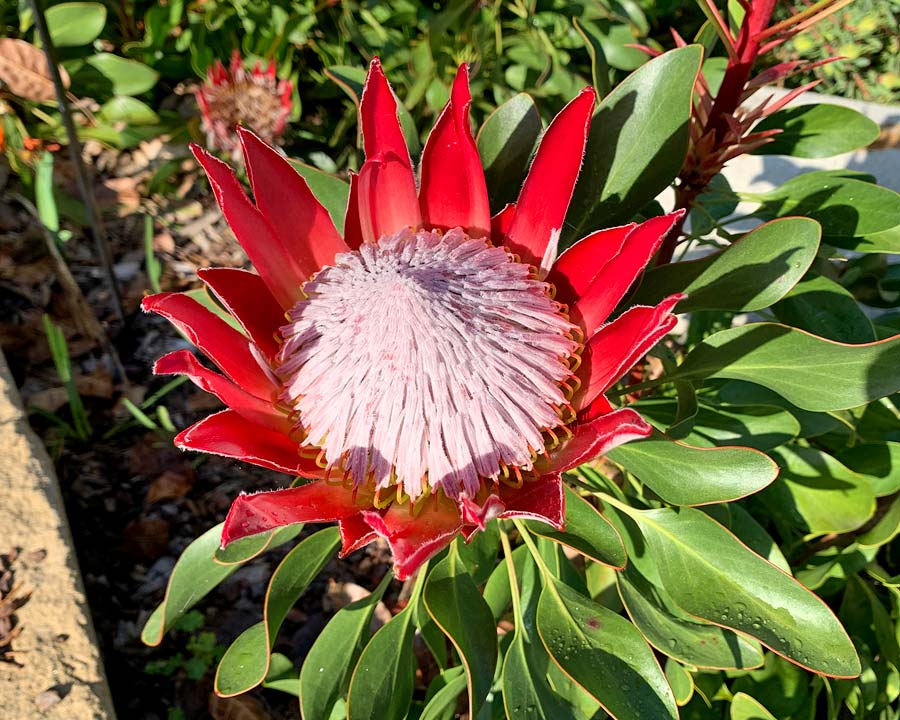
Protea cynaroides
Protea cynaroides, also called the king protea (from Afrikaans: koningsprotea, Xhosa: isiQwane sobukumkani), is a flowering plant.It is a distinctive member of Protea, having the largest flower head in the genus. The species is also known as giant protea, honeypot or king sugar bush.It is widely distributed in the southwestern and southern parts of South Africa in the fynbos region.

FileProtea cynaroides 3.jpg Wikimedia Commons
Protea cynaroides. king protea. P. cynaroides is a sparsely branched evergreen shrub with leathery, elliptic leaves and terminal, bowl-shaped flowerheads 15-30cm across, with red to pink or cream bracts
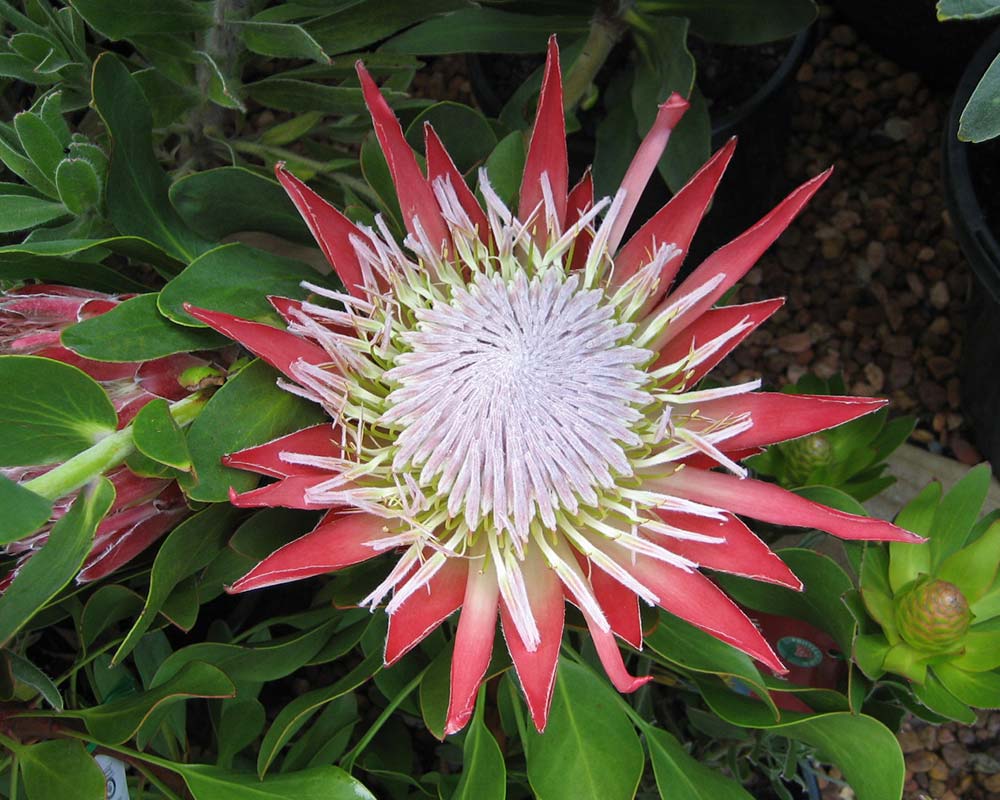
Protea cynaroides
Description. Protea cynaroides is a woody shrub with thick stems and large dark green, glossy leaves. Most plants are one metre in height when mature, but may vary according to locality and habitat from 0.35 m to 2 metres in height. The "flowers" of Protea cynaroides are actually flower heads with a collection of flowers in the centre.
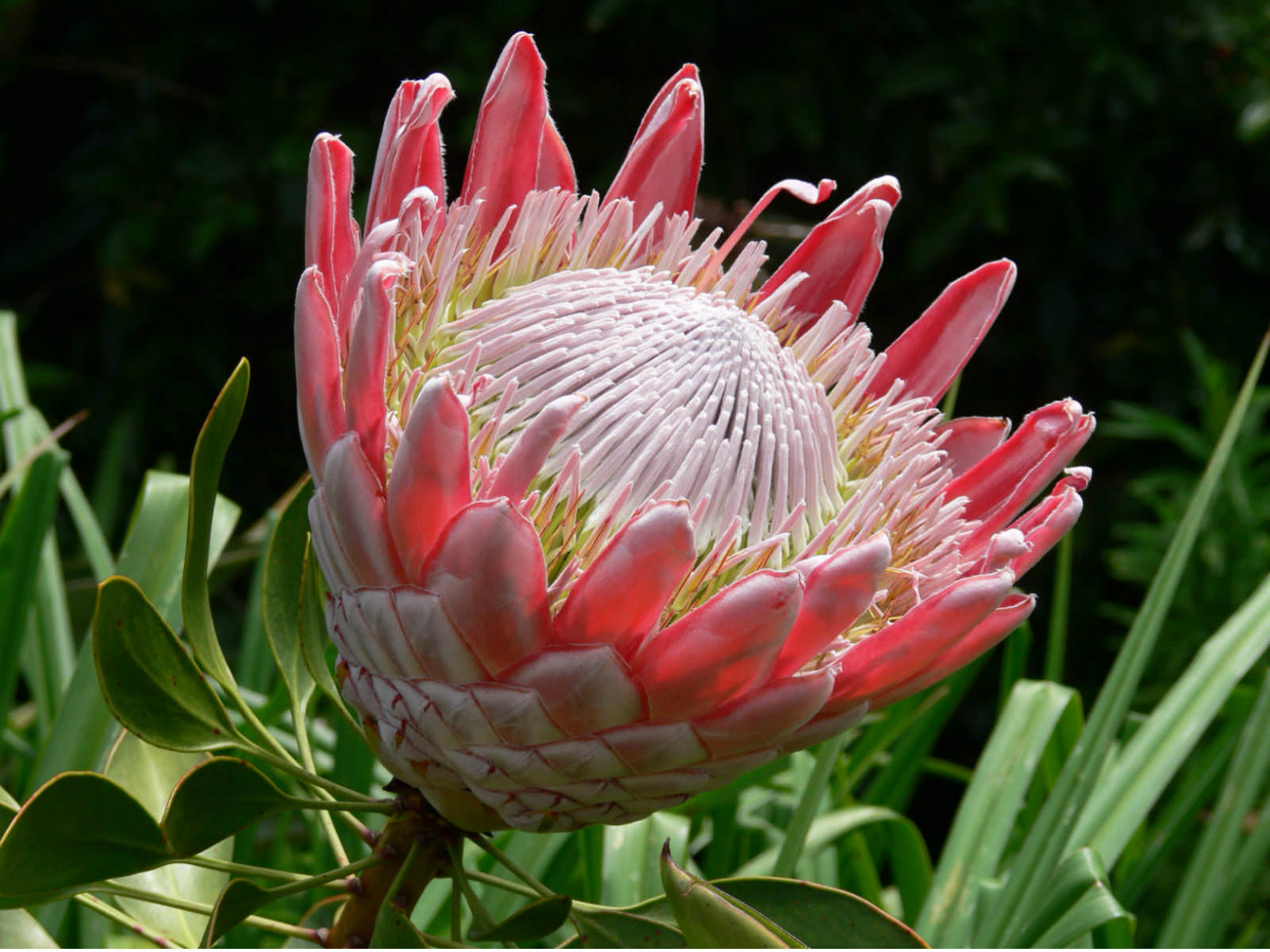
Protea cynaroides (King Protea) World of Flowering Plants
'King Protea' (Protea cynaroides): These plants resemble a crown, and symbolize beauty and resilience. 'King Protea' has yellow and red flowers with pink outer tips. One popular compact variety is protea 'Little Prince', and another beloved type of protea that blooms bountifully is called 'Special Pink Ice'.

Protea cynaroides Muchea Tree Farm
Winter Hardiness: 25-30° F. Protea cynaroides 'Mini King' (Dwarf King Protea) - A shrub to about 3 feet tall and wide with large 6 to 8 inch wide flowers. These pale silky pink or sometimes deep crimson flowers form a roundish central peak of flowers surrounded by rays of darker pink bracts. Flowers cover the shrub from autumn to spring with.